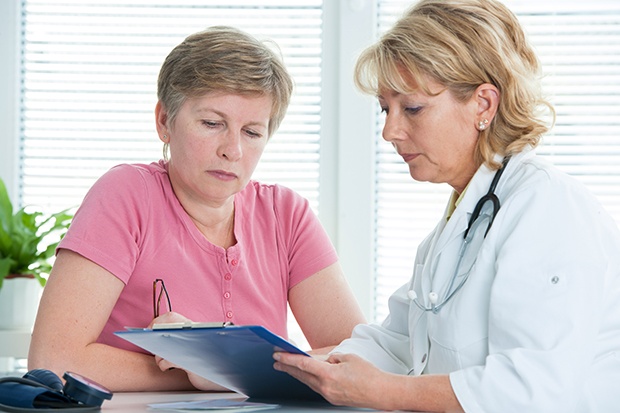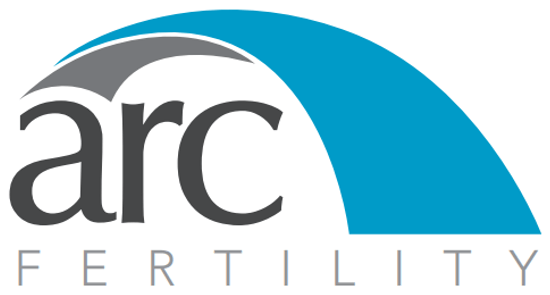
By Gail F. Whitman-Elia, MD, MPH, HCLD©
West Columbia, South Carolina
Many centers have come to rely on ovarian reserve testing in order to identify those patients unlikely to become pregnant prior to initiation of a first IVF treatment cycle. In theory, women unlikely to conceive can be given the opportunity to avoid the financial disappointment associated with an IVF failure. If a patient should still choose to use her own oocytes, then appropriate counseling can be given. Additionally, her treatment schedule can be adjusted in an attempt to optimize the stimulation response although we currently have no good evidence for the effectiveness of such adjustments.
Establishing a test regimen that defines the best and the worst potential IVF candidates has been a pursuit of many researchers. Clinical literature is filled with articles addressing this issue. Unfortunately, rather than helping patients make decisions about their treatment, it appears that pre-treatment ovarian reserve testing has generated more patient distress than benefit (1). If you personally have had difficulty understanding what your test results mean you should know that as a professional group IVF practitioners are also conflicted about what the test results mean and how to appropriately apply them in a given situation.
What is ovarian reserve?
The goal of any stimulation regimen for IVF is several good quality eggs and a healthy uterine environment. Ovarian reserve is a theoretical concept. As a practical matter, it refers to the ease at which an individual’s ovaries can be successfully stimulated with fertility drugs. The single most consistent variable affecting ovarian reserve is the woman’s age. This is because a woman is born with all the eggs she will ever have. In most women a majority of the eggs are genetically normal or balanced. However, there will be some that are genetically abnormal or unbalanced. It appears that the best eggs are ovulated first. The older a woman is, the fewer genetically balanced eggs she has left to respond to fertility drugs. This age relationship holds true even in the fertile population. In older women fewer normal embryos are available for implantation into the uterus. Hence, healthy women over 35 are less fertile than their younger counterparts. Women 40 and over may have only a 20% live birth rate with IVF treatment using their own eggs. This is why donor egg therapy has become so popular in this age group.
Unfortunately, there are some young women who respond poorly to attempts at ovarian stimulation. Perhaps these so called “poor responders” are born with more genetically unbalanced eggs such as in a Turner’s mosaic syndrome patient or they may have fewer eggs or poor quality eggs because of past surgical treatment, pelvic infections, cancer treatment, cigarette smoking, ovarian scarring associated with endometriosis, or unexplained infertility, etc. It is this group of patients that has presented the biggest challenge to IVF practitioners. Some young woman may have a lower egg reserve, but are they all of poor quality?
What ovarian reserve tests are commonly used?
There are several clinical markers used to identify the so called “poor responder”. Today the most commonly used ones in the United States are the basal follicle stimulating hormone (FSH) and the clomiphene citrate challenge test (CCCT) (2). Measures of inhibin, mullerian inhibiting factor, and a variety of provocative response tests have been used less frequently (3). More recently, ultrasound has also been used to anticipate stimulation response (4).
The basal FSH test is a blood test drawn on the second or third day of the menstrual cycle. FSH released from the pituitary gland stimulates the ovaries to recruit and select eggs so that one will grow and eventually ovulate. When there are few eggs available the pituitary gland has to send a much stronger signal so the FSH level will be higher in those circumstances. Most fertility centers have identified an FSH level above which patients are labeled “poor responders”. Women who fall into the normal range are believed to be better candidates for IVF. Unfortunately, test results may not be that accurate because it matters when blood is actually drawn during the menstrual cycle. An estradiol level may be drawn at the time of the basal FSH to help verify the fact that the patient is having the test drawn on the correct day. This is because if the estradiol level is elevated, the FSH level will be suppressed. Sometimes women in early menopause will have elevated day three estradiol levels with suppressed FSH levels giving false negative results.
The CCCT test was developed as a refinement to the basal FSH test for women 35 years of age or older. With this test the patient has a basal FSH level drawn on cycle day 3 and another one on day 10, following the administration of 100 mg clomiphene citrate on cycle days 5 through 9. The test is interpreted by comparing the basal to stimulated levels of the test results. Those women who demonstrate an exaggerated FSH release after clomiphene stimulation are said to have failed the test. Some women with normal basal FSH levels will be identified as poor responders when they are given the CCCT test. Unfortunately, as more individuals are assigned the “poor responder” label, more normal patients are inaccurately assigned to the abnormal group.
Ultrasound screening for ovarian volume and antral follicle count is a promising approach. With this technology patients are assigned to an anticipated ovarian response group based on follicle number. Clinically, women with very low ovarian reserve numbers will have very few eggs at oocyte retrieval. Those patients with adequate follicle numbers may have a reasonable quantity of oocytes at retrieval despite abnormal pre-treatment blood test results.
What does an abnormal result mean?
A true “poor responder” will have a lower chance of conception and live birth compared to members of the normal responder group regardless of the age. The problem lies in assigning patients to the wrong response group on the basis of pre-treatment testing alone.
What do I do if I have an abnormal result?
First, try to establish how important having a child with your own DNA is to you and your partner. Seeing a mental health provider familiar with assisted reproduction can be helpful. Remember that oocyte donor therapy is a wonderful option associated with high success rates. You can still have a baby with your partner’s DNA long as your uterus is receptive.
If you decide that you would like to attempt fertility treatment using your own oocytes despite a lower chance for success, make sure that your doctor is fully onboard with this approach and that you are financially and psychologically able to handle the stress of, perhaps, several failed treatment attempts. Get a second opinion if you have any lingering questions. Be aggressive. Continual pursuit of insemination cycles is costly and such an approach does not address fertilization issues. A properly planned IVF cycle can lead to answers and may help a couple with the closure process. And, there will be some patients who actually take home miracles when given the opportunity for a treatment cycle despite dismal treatment pre-screening test results.
Conclusion
A young patient with few oocytes may still have one or two eggs capable of resulting in a live-birth. Ovarian reserve testing identifies patients that have a lower probability of conceiving. Such tests address averages and not individuals. I will personally never forget one patient who at 33 years of age failed her clomid challenge test and several IVF stimulation attempts. She subsequently delivered a term infant by spontaneous conception two years after the delivery of donor egg twins. When making the choice to move on to donor eggs or adoption be sure that you have explored all available treatment options to your satisfaction.
Next steps:
Curious about your level of ovarian reserve and your options? To consult with a top fertility specialist near you, please click on the button below.
Find out about your Ovarian Reserve Level by speaking with a top fertility doctor at one of ARC’s member clinics near you.
References
- Mol et al (2006) Value of ovarian reserve testing before IVF: a clinical decision analysis. Hum Reprod vol. 21, 1816-1823.
- Scott RT (1996) Evaluation and Treatment of Low Responders. Seminars in Reproductive Endocrinology, 317-335.
- Kwee et al (2006) The clomiphene citrate challenge test versus the exogenous follicle-stimulating hormone ovarian reserve test as a single test for identification of low responders and hyperresponders to in vitro fertilization. Fertil Steril vol. 85, 1714-1722.
- Hendriks et al (2007) Ultrasonography as a tool for the prediction of outcome in IVF patients: a comparative meta-analysis of ovarian volume and antral follicle count. Fert Steril vol 87, 764-775.

